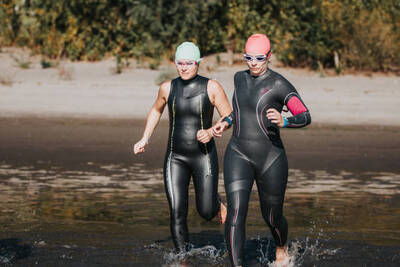How Are Triathlon Wetsuits Different from Other Wetsuits?
-
Triathlon wetsuits are specifically engineered to meet the unique demands of triathlon competitions, setting them apart from traditional surfing or diving wetsuits in several ways:
- Buoyancy
Triathlon wetsuits are designed with strategically placed panels of varying neoprene thickness to maximize buoyancy in the water. This helps swimmers maintain an optimal body position and conserve energy, providing a competitive edge.
- Flexibility
Unlike standard wetsuits, triathlon wetsuits prioritize flexibility, especially around the shoulders and arms. This allows for a greater range of motion and minimizes resistance during the swim portion of a triathlon.
- Weight and Material
Triathlon wetsuits are typically lighter than other wetsuits. They use advanced, hydrodynamic neoprene materials that reduce drag and facilitate quicker transitions between swimming and other stages of the race.
- Thermal Protection
While both types of wetsuits provide thermal insulation, triathlon wetsuits balance warmth with the need for speed and flexibility. They are designed to keep athletes warm without adding unnecessary bulk.
- Quick Removal
Triathlon wetsuits often feature easy-to-remove designs, such as longer zippers or special lining, to enable rapid changes during transitions and save valuable race time.
In summary, triathlon wetsuits are optimized for buoyancy, flexibility, lightweight construction, and quick removal, all of which enable athletes to perform at their best in competitions. In contrast, traditional wetsuits are generally designed for warmth and protection in surfing, diving, or other water sports, with less emphasis on speed and efficiency.
-
Lane Liii likes this





